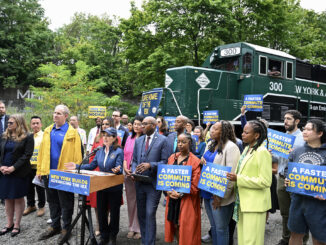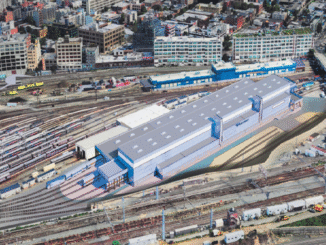WASHINGTON – The New York region needs to strengthen rail capacity and resiliency in order to create “a better ability to resist damage, recover from an event and return the rail system to service” following major disasters, Amtrak President and CEO Joe Boardman told a U.S. Senate committee today.
To address these critical needs, and to compensate Amtrak for increased costs and revenue lost during Hurricane Sandy, Amtrak is requesting $336 million in emergency federal funding.
Of this amount, $276 million would be for measures that provide enhanced protection and improved recovery capability of Penn Station New York and its tunnels against flooding or emergency disruptions, and to begin design and construction of elements of the capacity increasing Gateway Program. The additional $60 million would be to cover estimated operating losses incurred as a result of the storm.
Boardman said the hurricane exposed “the fragility of century old structures and the challenges that come when we’re confronted with weather and conditions the designers never anticipated.” He highlighted three projects that illustrate how key investments can buy both capacity and resilience in the Northeast Corridor rail network.
First, is designing a high density signaling system to provide greater operational flexibility in the four East River Tunnels used by Amtrak and Long Island Railroad. Two of these four tunnels flooded, received extensive damage and while re-opened have not yet returned to full service. If high density signaling was installed, the two undamaged tunnels could today handle a heavier traffic load and provide higher service levels. The two North River Tunnels used by Amtrak and New Jersey Transit have high density signaling system in place.
Second, a major electrical substation at Kearny, N.J., that supplies power to the North River Tunnels and Penn Station New York needs to be rebuilt atop a platform that will be above the high water line and large enough so that more electrical capacity can be added at some point in the future to support plans for additional track capacity and more passenger trains into and out of New York. This substation was completely flooded during the storm, its outage hampered service recovery and has been restored to full service.
And third, in order to provide permanent and substantial new levels of flood prevention, redundancy, and capacity, Amtrak would advance design and early construction elements of the Gateway Program, including for two new Hudson River tunnels between New York and New Jersey. The two existing tunnels flooded during the hurricane and vividly demonstrated the need for more tunnel capacity that could have aided in service recovery.
“We need a system that’s robust enough to support our operational needs not just on good days, but every day,” Boardman emphasized. He also stated that another aspect of the Amtrak recovery effort was “the work we didn’t have to do.”
Over the last decade, Congress has invested in the Amtrak capital program to improve the resilience of its system in New York and those improvements provided for a faster restoration of service reducing the recovery period by days and perhaps weeks.
For example, fire and life safety improvements made to the tunnels provided better access points for quicker inspection for assessment of damage, pumps were connected to new standpipe systems to help remove the flood waters and an expanded ventilation system assisted in a speedier drying out of the tunnels. In addition, federal funds in recent years were used to clean and clear the right-of-way of trees that could topple in strong winds and get tangled in the overhead wires as well as for the repair of culverts and ditches to improve drainage and reduce the potential for track washouts.




